ORNO OR-CR-259 Handleiding
Bekijk gratis de handleiding van ORNO OR-CR-259 (4 pagina’s), behorend tot de categorie Detector. Deze gids werd als nuttig beoordeeld door 119 mensen en kreeg gemiddeld 4.4 sterren uit 60 reviews. Heb je een vraag over ORNO OR-CR-259 of wil je andere gebruikers van dit product iets vragen? Stel een vraag
Pagina 1/4

OR- -2 /W CR 59
OR- -2 /B CR 59
(PL) Czujnik ruchu i obecności
(EN) Motion and presence sensor
(DE) Bewegungs- und Präsenzsensor
ORNO-LOGISTIC Sp. z o.o.
ul. Rolników 437
44-141 Gliwice POLAND
tel. (+48) 32 43 43 110
WAŻNE!
Przed rozpoczę urządzenia, należy zapoznać się z nin ejszą instrukcją obsługi oraz zachować ją na przyszłość. Dokonanie samodzielnych napraw i modyfikacji ciem korzystania z i
skutkuje utratą gwarancji. Producent nie odpowiada za uszkodzenia mogące wyniknąć z nieprawidłowego montażu czy eksploatacji urządzenia.
Z uwagi na fakt, niczne podlegże dane tech ają ciągłym modyfikacjom, Producent zastrzega sobie prawo do dokonywania zmian dotyczących charakterystyki wyrobu oraz
wprowadzania innych rozwiązań konstrukcyjnych niepogarszających parametrów i walorów użytkowych produktu.
Dodatkowe informacje oraz wsparcie techniczne związane z produktem dostępne na: www.support.orno.pl. Orno Logistic Sp. z o.o. nie ponosi odpowiedzialności za sku- tki
wynikające z nieprzestrzegania zaleceń niniejszej instrukcji. Firma Orno-Logistic Sp. z o.o. zastrzega sobie prawo do wprowadzania zmian w instrukcji - aktualna wersja do pobrania
ze strony www.support.orno.pl. Wszelkie prawa do tłumaczenia/interpretowania oraz prawa autorskie niniejszej instrukcji są zastrzeżone.
1. iezgodnie z jego przeznaczeniem. Nie używaj urządzenia n
2. Wszelkie czynności wykonuj przy odłączonym zasilaniu.
3. Nie zanurzaj urządzenia w wodzie i innych płynach.
4. Nie obsługuj urządzenia gdy uszkodzona jest obudowa.
5. apraw. Nie otwieraj urządzenia i nie dokonuj samodzielnych n
6. Nie wykorzystuj przedmiotów niestabilnych jako podstawy instalowania.
7. Przed urządzeniem nie umieszczaj przedmiotów mogących zakłócić pracę czujnika.
8. Przewody elektryczne muszą być podłączone zgodnie ze schematem podłączenia.
IMPORTANT!
Before using the device, read this Service Manual and keep it for future use. Any repair or modification carried out by yourselves results in loss of guarantee. The manufacturer is
not responsible for any damage that can result from improper device instal tion or operation. la
In view of the fact that the technical data are subject to continuous modifications, the manufacturer reserves a right to make changes to the product characteristics and to
introduce different constructional solutions without deterior ion of the product parameters or functional quality. at
Additional information and technical support related to the product is available at: www.support.orno.pl. Orno-Logistic Sp. z o.o. holds no responsibility for the results of non-
compliance with the provisions of the present Manual. Orno Logistic Sp. z o.o. reserves the right to make changes to the Manual - the latest version of the Manual can be
downloaded from www.support.orno.pl. Any translation/interpretation rights and copyright in relation to this Manual are reserved.
1. Do not use the device against its intended use.
2. Disconnect the power supply before any activities on the product.
3. Do not dip the device in water or another fluid.
4. Do not operate the device when its housing is damaged.
5. Do not open the device and do not repair it by yourselves.
6. Do not use unstable items as the basis for installation.
7. Do not place objects that could interfere with the sensor operation before the device.
8. Power wires must be connected according into connecting scheme.
WICHTIG!
Bevor Sie trieb nehmen, lesen Sie bitte diese Bdas Gerät in Be edienungsanleitung und bewahren Sie sie zum späteren Nachschlagen auf. Eigene Reparaturen und Modifikationen
führen zum Verlust der Garantie. Der Hersteller haftet nicht für Schäden, die durch unsachgemäß ienung des Gerätes entstehen könnee Montage oder Bed n.
Da die technischen Daten ständigen Änderungen unterliegen, behält sich der Hersteller das Recht vor, Änderungen an den Produkteigenschaften vorzunehmen und andere
konstruktive Lösungen einzuführen, di Produkts nicht beeinträchtigen. e die Parameter d funktionellen Eigenschaften des un
Weitere Informationen und technische Unterstützung zu diesem Produkt finden Sie unter: www.support.orno.pl. Orno Logistic Sp. z o.o. haftet nicht für die Folgen der -
Nichtbeachtung der Anweisungen in dieser Bedienungsanleitung. Orno-Logistic Sp. z o.o. behält sich das Recht vor, Änderungen in der Bedienungsanleitung vorzunehmen -
aktuelle Version zum Herunterladen unter www.support.orno.pl. Alle Rechte an Übersetzung/Dolmetschen und Urheberrechten an dieser Bedienungsanleitung sind vorbehalten.
1. Benutzen Sie das Gerät ausschließlich zu den in dieser Anweisung beschriebenen Zwecken.
2. Alle Arbeiten dürfen nur bei abgeschalteter Stromversorgung durchgeführt werden.
3. Tauchen Sie das Gerät nicht in Wasser oder andere Flüssigkeiten.
4. Nutzen Sie die Anlage nicht, wenn ihre Gehäuse beschädigt ist.
5. Öffnen Sie die Einrichtung nicht und führen Sie keine selbstständigen Reparaturen aus.
6. Verwenden Si e keine instabilen Gegenstände als Basis für die Installation.
7. Platzieren Sie keine Gegenstände, die den Sensorbetrieb stören könnten, vor dem Gerät.
8. Die elektrischen Kabel müssen gemäß dem Schaltplan angeschlossen werden.
Każde gospodarstwo jest użytkownikiem sprzętu elektry e potencjalnym wytwórcą niebezpiecznego dla ludzi i środowiska odpadu, z tytułu obecności w sprzęcie cznego i elektronicznego, a co za tym idzi
niebezpiecznych substancji, mieszanin oraz części składowych. Z drugiej strony zużyty sprzęt to ce iał, z którego możemy odzyskać sur miedź, cyna, szkło, żelazo i inne.nny mater owce takie jak
Symbol przekreślonego kosza na śmieci umieszczany na sprzęcie, opakowaniu lub dokumentach do niego dołączonych oznacza, że produktu nie wolno wyrzucać łącznie z innymi odpadami.
Oznakowanie oznacza jednocześnie, że sprzęt został wprowadzony do obrotu po dniu
13 sierpnia 2005 r. Obowiązkiem użytkownika jest przekazanie zużytego sprzętu do wyznaczonego punktu zbiórki w celu właściwego jego przetworzenia. Inf dostępnym systormacje o emie zbierania
zużytego sprzętu elektrycznego można znaleźć w punkcie informacyjnym sklepu oraz w urzędzie miasta/gminy. Odpowiednie postępowanie ze zużytym sprzętem zapobiega negatywnym
konsekwencjom dla środowiska naturalnego i ludzkiego zdrowia!
Each household is a user of electrical and electronic equipment, and hence a potential producer of hazardous waste for humans and the environment, due to the presence of hazardous substances,
mixtures and components in the equipment. On the other hand, used equipment is valuable material from which we can recover raw materials such as copper, tin, glass, iron and others. The weee sign
placed on the equipment, packaging or documents attached to it indicates the need for selective collection of waste electrical and electronic equipment. Products so marked, under penalty of fine,
cannot be thrown into ordinary garbage along with other waste. The marking means at the same time that the equipment was placed on the market after August 13, 2005. It is the responsibility of the
user to hand the used equipment to a designated collection point for proper processing. Used equipment can also be handed over to the seller, if one buys a new product in an amount not greater than
the new purchased equipment of the same type. Information on the available collection system of waste electrical equipment can be found in the information desk of the store and in the municipal
office or district office. Proper handling of used equipment prevents negative consequences for the environment and human health!
Jeder Haushalt ist ein Anwender von Elektro- und Elektronikgeräten und damit ein potenzieller Erzeuger von Abfällen, die für Mensch und Umwelt aufgrund des Vorhandenseins von gefährlichen
Stoffen, Gemischen und Komponente its sind Altgen in den Geräten gefährlich sind. Andererse räte ein wertvoller Rohstoff, aus dem Rohstoffe wie Kupfer, Zinn, Glas, Eisen und andere zurückgewonnen
werden können. Das Symbol der durchgestrichenen Mülltonne auf der Verpackung, dem Gerät oder den dazugehörigen Dokumenten, weist auf die Notwendigkeit der getrennten Sammlung von Elektro-
und Elektronikaltgeräten hin. Auf diese Weise gekennzeichnete Produkte dürfen unter Strafe nicht zusammen mit anderen Abfällen entsorgt werden. Die Kennzeichnung weist gleichzeitig darauf hin,
dass die Geräte nach dem 13 August 2005 in Verkehr gebracht wurden. Es liegt in der Verantwortung des Benutzers, die Altgeräte zur ordnungsgemäßen Behandlung an eine dafür vorgesehene
Sammelstelle zu bringen. Informationen über das verfügbare System zur Sammlung von Elektroaltgeräten finden Sie in der Informationsstelle des Ladens und im Magistrat/Gemeindeamt. Ein
sachgemäßer Umgang mit Altgeräten verhindert negative Folgen für die Umwelt und die menschliche Gesundheit!
01/2021

2
SKRÓCONA INSTRUKCJA OBSŁUGI/ QUICK GUIDE/ KURZANLEITUNG
N - Zacisk neutralny/ Neutral terminal/ Neutrale Klemme
L - Napięcie wejściowe/ Input voltage/ Eingangsspannung
- Obciążenie/load/Belastung
L czerwony/red/Rot ’ –
N – ebieski/blue/Blau ni
L br owy/brown/Braun – ąz
rys.1/ fig.1/ Abb.1
rys.2/ fig.2/ Abb.2
Instalacja na ścianie
Wysokość instalacji: 2,2-6m
Wall-mounted installation
Installation height: 2.2-6m
Wandmontierte Installation
Installationshöhe: 2,2-6m
Instalacja na suficie
Wysokość instalacji: 2,2-6m
Ceiling installation
Installation height: 2.2-6m
Deckenmontage
Installationshöhe: 2,2-6m
rys.3/ fig. 3/ Abb. 3
rys.4/ fig. 4/ Abb. 4
rys.5/ fig. 5/ Abb. 5
SPECYFIKACJA TECHNICZNA/ TECHNICAL DATA/ TECHNISCHE DATEN
Zasilanie
Power supply
Stromversorgung
230V~, 50Hz
Max. obciążenie
Max. load
Max. Belastung
2000W 5 W 00
Pobór prądu
Power consumption
Stromaufnahme
c 0,5W a.
Zasięg detekcji czujnika
Detection range
Erfassungsbereich
Ø20m
Kąt detekcji czujnika
Detection angle
Erfassungswinkel
3600
Regulacja czujnika natężenia światła
Adjustable daylight sensor
Einstellbarer Tageslichtsensor
<3- 00 lux 20
Regulacja czasu świecenia
Adjustable time setting
Einstellbare Leuchtdauer
min: 10 sec c. . ± 3se
max: 30 min. ± 2min.
Stopień ochrony
Protection level
Schutzart
IP65
Waga netto
Net weight
Nettogewicht
0,22kg
Temp. pracy
Working temperature
Betriebstemperatur
-20 0C-400C
Wymiary
Dimensions
Abmessungen
172,5 86,5 x 56 x mm
Wysokość instalacji
Installation height
Installatio nshöhe
2,2- 6m
Współpracuje z LED
Works with LED
Arbeitet mit LED
✓
Czujnik obecności
Presence sensor
Anwesenheitssensor
✓
Przekaźnik
Relay
Relais
✓
PL
Instrukcja obsługi
CHARAKTERYSTYKA
Czujnik służy do aut ia oświetleniem lub innymi urządzeniami elektrycznymi (np. elektryczne ogrzewanie, klimatyzacja itp.) wewnątrz budynku po wykryciu ruchu. Odbiornik omatycznego sterowan
(oświetlenie) jest włączany za pomocą czujnika ruchu PIR, który działa na podczerwień. P zwala on na włączenie oświetlenia pod wpływ iektu wydzielającego ciepło w obrębie pola o em ruchu ob
widzenia czujnika i pozostaje włączone tak długo jak długo czujnik wykrywa ruch. Jeśli w ustawionym czasie nie zostanie wykryty ruch oświetlenie lub inne podłą zone urządzenie elektryczne c
zostanie autom atycznie wyłączone.
OGÓLNE INFORMACJE
Wybierając miejsce montażu należy wziąć pod uwagę następujące kryteria:
- kąt zasięgu czujnika,
- czujnik nie powinien być kierowany na miejsce, gdzie może być wykryty ruch zwierząt,
- czujnik nie powinien być kierowany na oświetlane jasne obiekty (tj. białe) lub będące źródłem ciepła, ponieważ mogą one wpływać negatywnie na pracę czujnika,
- nie montować w pobliżu silnych źródeł zakłóceń elektromagnetycznych,
- czy przewod upewnić się y zasilające posiadają odpowiednie zabezpieczenie prądowe w postaci właściwych bezpieczników lub inne urządzenia odłączające zasilanie w przypadku przeciążenia,
- wania ruchu, zanieczyszczenie optyki czujnika powoduje, że zmniejsza się zasięg i czułość wykry
- jeżeli różnica temperatur pomiędzy obiektem poruszającym się, a otoczeniem jest niewielka (np. latem), czujnik może reagować później i zmniejszy się jego zasięg wykrywania ruchu.
INSTALACJA
1. n Odłącz zasilanie za pomocą bezpiecznika lub włącz ika głównego.
2. S prawdź odpowiednim przyrządem stan beznapięciowy na przewodach zasilających.
3. Odkręć obudowę czujnika i oddziel podstawę (rys. 1).
4. Przełóż kable przez uszczelkę w podstawie i podłącz zgodnie ze schematem (rys. 2).
5. o podstawy i zamontuj czujn ybranym miejscu. Przykręć obudowę czujnika d ik na ścianie w w
6. Podłącz zasilanie i przetestuj czujnik.

3
TEST
Potencjometr TIME służy do ustawienia czasu opóźnienia, po którym oświetlenie ma się wyłączyć, licząc od momentu wykryci nik. Aby zwiększyć czas opóźnienia, należy a ostatniego ruchu przez czuj
potencjometr przekręcić zgodnie z ruchem wskazówek zegara. Aby zmniejszyć czas opóźnienia, należy potencjometr przekręcić w kierunku przeciwnym do ruchu wskazówek zegara.
Potencjometr LUX służy do ustawienia mini alnego progu oświetlenia przy jakim czuj ma zadziałać. Po przekręceniu potencjometru maksymalnie w prawą stronę czujnik ruchu powinien załączyć m nik
oświetlenie przy bardzo niskim natężeniu światła.
TEST URZĄDZENIA
- Pokrętło TIME ustaw na 10 sek. odwrotnie d ruchu wskazówek zegara, pokrętło LUX ust w pozycji maximum (ikona słońca) zgodnie z ruchem wskazówek zegara –o aw patrz rysunek 3.
- Po włączeniu zasilania, czujnik przejdzie w stan kalibracji. Po około 30 sekundach czujnik załączy się, a następnie gdy nie w kryje ruchu w ciągu 10±3 sekund wyłączy sięy automatycznie.
- Pokrętło LUX przekręć w kierunku przeciwnym do ruchu wskazówek zegara na minimum (3). Jeżeli natężenie oświetlenia otoczenia przekroczy 3LUX, urządzenie sterowane przez czujnik nie
powinno się włą zyć. W przypadku natężenia oświetlenia poniżej 3LUX czujnik będzie działał i włączy oświetlenie. Przy braku wykrycia ruchu w polu detekcji czujnik wyłączy sterowane c
urządzenie automatycznie w ciągu 10 ±3 sekund.
Uwaga: Podczas przeprowadzania testu czujnik a w dzień pokrętło LUX należy ustawić na MAX w przeciwnym razie czujnik nie będzie działał prawidłowo. Jeżeli moc podłączonego do
czujnika oświetlenia jest wyższa niż 60W odległość między czujnikiem, a oświetleniem powinn wynosić przynajmna iej 60 cm.
NIEKTÓRE PROB IĄZANIALEMY I SPOSOBY ICH ROZW
1. Obciążenie nie działa:
a. Sprawdzić podłączenie zasilania i odbiornika.
b. Sprawdź czy obciążenie jest prawidłowe.
c. Sprawdź ustawienia czujnika i ustawienia natężenia oświetlenia otoczenia.
2. Słaba czułość:
a. Sprawdź, czy przed czujnikiem nie znajdują się urządzenia, które mogą zakłócić odbierane sygnały.
b. zenia. Sprawdź temperaturę otoc
c. Sprawdź, czy wykrywany obiekt znajduje się w polu detekcji
d. o Sprawdź czy wysok ść instalacji jest prawidłowa.
3. Czujnik n enia: ie może automatycznie wyłączyć obciąż
a. Sprawdź czy w polu detekcji nie występują ciągłe sygnały ruchu.
b. Sprawdź, czy potencjometr TIME ustawiony jest prawidłowo.
c. ySprawdź, czy połączenia przewodów są w konane prawidłowo.
BEZPIECZEŃSTWO I KONSERWACJA
Konserw ację wykonywać należy przy odłączonym zasilaniu.
Czyścić wyłącznie delikatnymi i suchymi tkaninami.
Nie używać chemicznych środków czyszczących.
Nie zakrywać wyrobu.
Zapewnić swobodny dostęp powietrza.
EN
Operating and installation instructions
DESCRIPTION
The sensor is used to automatically control lighting or other electrical devices (e.g. electric heating, air-conditioning, etc.) inside the building when motion is detected. The receiver ighting) is (l
switched on by means of the PIR motion sensor that is the passive infrared sensor. It allows the lighting to be switched on when an object that emits heat within the sensor's field of view moves and
remains on as long as the sensor detects movement. If no movement is detected within the set time, the lighting or other connected electrical appliance is automatically switched off.
GENERAL INFORMATION
The following criteria must be taken into account when selecting the mounting location:
- sen sor’s detection angle,
- do not direct the sensor towards a place where animal motion could be detected,
- do not direct the sensor towards brightly-lit objects (i.e. white) or heat-generating objects, as they can have negative impact on sensor’s operation,
- do not install near sources of strong electromagnetic interferences,
- make sure all wires have proper overload protection in form of fuses or other circuit breakers,
- tion sensitivity, pollution of the sensor’s optics may reduce its range of operation and motion detec
- if there is a slight difference in temperature of the moving object and its ambiance (e.g. in summer), the sensor may react later and its detection range will be reduced.
INSTALLATION
1. Disconnect the power supply using the fuse or main switch.
2. Check if there is no voltage on the power leads with a suitable instrument.
3. Unscrew the sensor housing and separate the base (fig. 1).
4. Pull the cables through the gasket in the base and connect as shown in the diagram (fig. 2).
5. Screw the sensor housing to the base and mount the sensor on the wall in the desired location.
6. Connect the power supply and test the sensor.
TEST
The TIME potentiometer is used to set the delay time after which the lighting is to switch off since the last movement was de cted by the sensor. To increase the delay time, turn the potentiometer te
clockwise. To reduce the delay time, turn the potentiometer counterclockwise.
The LUX potentiometer is used to set the minimum illumination threshold at which the sensor is to activate. After turning the potentiometer to the right as much as possible, the motion detector
should switch on the lighting at very low light levels.
- Set the TIME knob to 10 seconds counterclockwise, the LUX knob to maximum (sun icon) clockwise - see figure 3.
- When the power is switched on, the sensor will go into calibration mode. After about 30 seconds, the sensor will switch on and then, if it does not detect movement within 10±3 seconds, it will
switch off automatically.
- Turn the LUX knob counterclockwise to minimum (3). If the ambient light intensity exceeds 3LUX, the sensor-controlled device should not switch on. If the light intensity is below 3LUX, the sensor
will operate and switch on the lighting. If no movement is detected in the detection area, the sensor will automatically switch off the controlled device within 10 ±3 seconds. The lighting will be
switched on again.
Important: When testing the sensor during the day, set the LUX knob to MAX , otherwise the sensor will not function properly. If the power of the light sensor is higher than 60W, the distance
between the sensor and the lighting should be at least 60 cm.
SOME PROBLEMS AND SOLUTIONS
1. The load does not work:
a) Please check if the connection of power source and load is correct.
b) Please check if the load is good.
c) Please check if the settings of working light correspond to ambient light.
2. Poor sensitivity:
a. check if there are any objects in front of the sensor that could negatively impact its operation,
b. check the ambient temperature,
c. check if the moving object is in the detection field,
d. check if the installation height is correct,
3. The load cannot be automatically switched off:
a. check whether there is any continuous motion in the detection field,
b. check if TIME knob is correctly adjusted,
c. check if wires are properly connected.
Product specificaties
| Merk: | ORNO |
| Categorie: | Detector |
| Model: | OR-CR-259 |
Heb je hulp nodig?
Als je hulp nodig hebt met ORNO OR-CR-259 stel dan hieronder een vraag en andere gebruikers zullen je antwoorden
Handleiding Detector ORNO
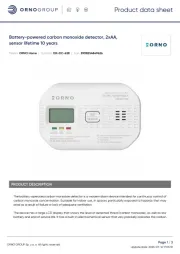
11 Augustus 2025
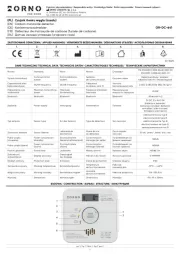
11 Augustus 2025
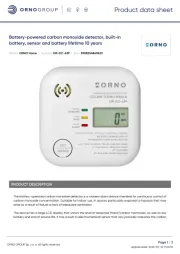
11 Augustus 2025

22 Augustus 2024

26 Juni 2023

19 Juni 2023

17 Juni 2023

16 Juni 2023

23 Mei 2023

22 Mei 2023
Handleiding Detector
- Vemer
- BRK
- Marquant
- Silent Knight
- Ferrex
- Skyscan
- Ei Electronics
- Beltronics
- Mercury
- Olympia
- Hager
- Duro
- Trotec
- Extech
- Brennenstuhl
Nieuwste handleidingen voor Detector
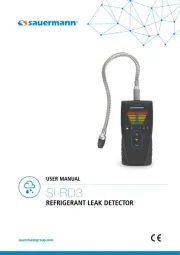
1 September 2025

20 Augustus 2025
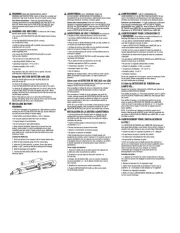
18 Augustus 2025

12 Augustus 2025
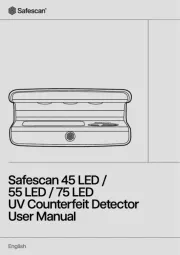
8 Augustus 2025

28 Juli 2025
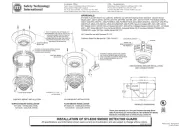
24 Juli 2025
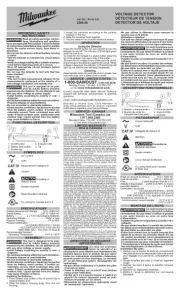
22 Juli 2025
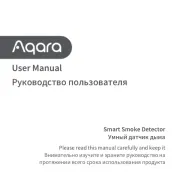
5 Juli 2025
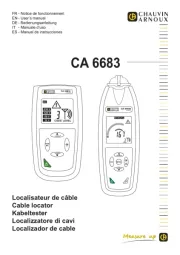
4 Juli 2025